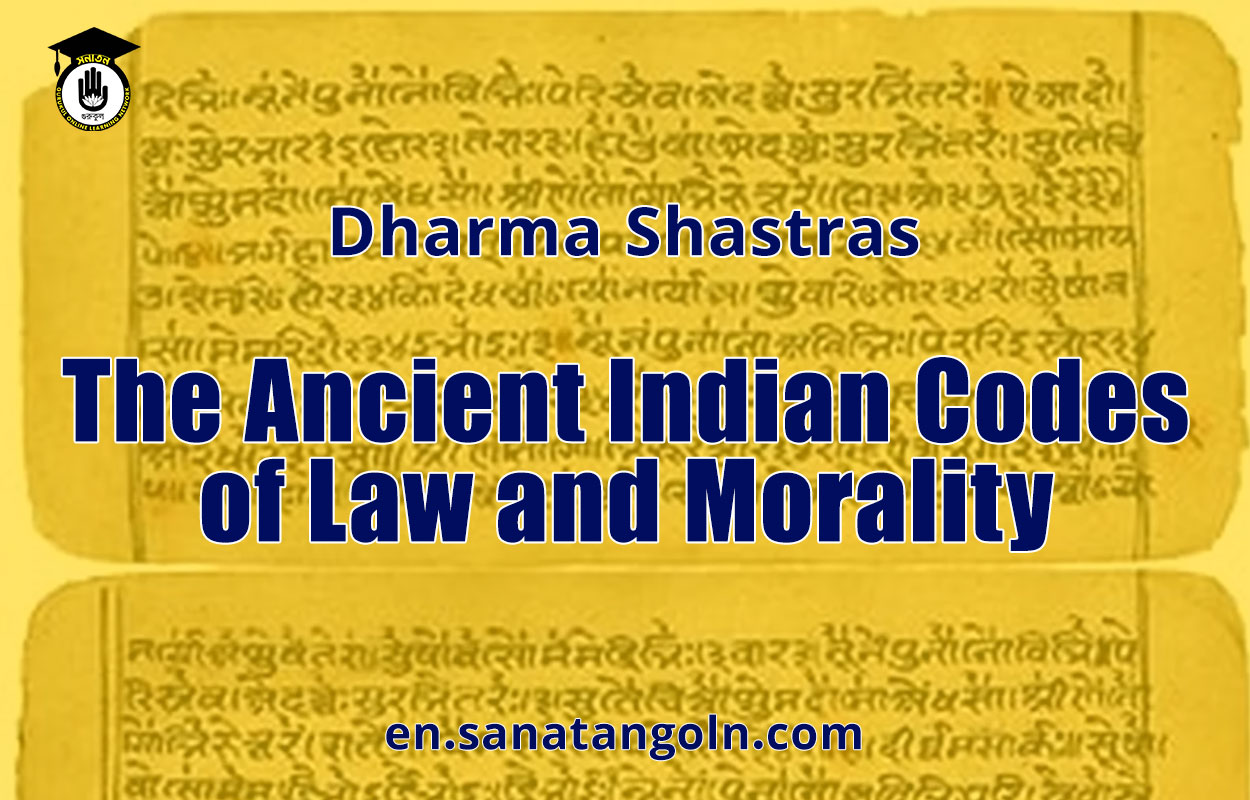India’s rich and diverse history is marked by an array of philosophical, religious, and legal texts that have shaped its social and moral landscape. Among these texts, the Dharma Shastras hold a special place, serving as the lighthouse of morality, law, and social conduct. Delving into these scriptures gives one insight into the intricate fabric of ancient Indian society and its quest for righteousness, duty, and social order.
Origins and Definition
The term ‘Dharma Shastra’ can be broken down into two words: ‘Dharma’ and ‘Shastra’. While ‘Shastra’ generally refers to a discipline or a branch of knowledge, ‘Dharma’ is a multifaceted term that doesn’t have a direct translation in English. It encapsulates duty, religion, law, morality, and righteous living, depending on the context in which it’s used. Thus, Dharma Shastras are treatises or knowledge systems outlining the moral and legal duties of individuals within the society.
The roots of Dharma Shastras can be traced back to the Vedas, India’s oldest sacred scriptures. Over time, as society evolved and became more complex, there arose a need to codify and systematize social and moral laws. This necessity led to the compilation of the Dharma Sutras, which later expanded into the more detailed Dharma Shastras.
Key Texts and Authors
Several Dharma Shastras have been composed over the centuries, but a few stand out due to their comprehensive nature and widespread acceptance:
- Manusmriti (Laws of Manu): Often deemed the most important of the Dharma Shastras, Manusmriti, attributed to the ancient sage Manu, outlines the duties of individuals based on their caste, gender, and occupation. It lays down laws concerning marriage, inheritance, and social conduct.
- Yajnavalkya Smriti: This text, ascribed to the sage Yajnavalkya, is more concise than Manusmriti but equally profound. It is unique for its threefold division: Achara (conduct), Vyavahara (law), and Prayashchitta (penance).
- Narada Smriti: Unlike other Dharma Shastras that focus more on righteous conduct, Narada Smriti predominantly deals with legal matters, especially civil law.
These texts, among others, were written by sages who were perceived as conduits of divine knowledge, ensuring their reverence and acceptance among the masses.
Structure and Content
While each Dharma Shastra has its unique composition, a general structure pervades most of them:
- Varnashrama Dharma: This refers to the duties arising out of one’s caste (Varna) and stage of life (Ashrama). Ancient Indian society was divided into four primary castes – Brahmins (priests and scholars), Kshatriyas (warriors and rulers), Vaishyas (traders), and Shudras (servants). Additionally, life was categorized into four stages – Brahmacharya (student life), Grihastha (household life), Vanaprastha (retirement), and Sannyasa (renunciation). The Dharma Shastras detail the duties corresponding to each caste and life stage.
- Vyavahara (Civil and Criminal Law): This section encompasses various laws related to property, contracts, inheritance, crime, and punishment. These laws offer a glimpse into the societal concerns of the time and the means to address them legally.
- Prayashchitta (Atonements): Recognizing human fallibility, the Dharma Shastras provide means of atonement for sins and transgressions. This section often prescribes rituals, penances, and acts of charity to redress wrongdoing.
Influence and Impact
The Dharma Shastras have profoundly influenced Indian society, serving as the moral and legal compass for centuries. Their imprint can be seen in various aspects:
- Social Structure: The caste-based duties outlined in these texts played a role in shaping and cementing the Varna system in India. While they began as classifications based on occupation, over time, they became hereditary, leading to a rigid caste hierarchy.
- Legal System: Ancient Indian kingdoms often used Dharma Shastras as references for legal decisions, especially in civil matters. The principles laid down in these texts influenced many traditional legal practices, some of which persist today.
- Moral Code: Beyond law and caste, the Dharma Shastras offer guidance on personal conduct, relationships, and morality. They have significantly contributed to the moral and ethical foundation of Indian society.
Criticism and Evolution
While the Dharma Shastras are revered for their wisdom, they are not without critics, especially in contemporary times. The primary critique centers around their endorsement of the caste system and the prescribed duties, which often led to social discrimination. Moreover, some of the gender norms outlined in these texts, especially concerning women’s rights and roles, are deemed regressive by modern standards.
However, it’s essential to view the Dharma Shastras in their historical context. These were texts that evolved over time, reflecting the societal norms, values, and challenges of their respective periods. Moreover, the Dharma Shastras were not static; they adapted and incorporated new ideas as society changed.
In contemporary India, while the legal system has moved away from the Dharma Shastras, these texts’ moral and philosophical essence continues to influence the broader cultural and spiritual landscape.
Conclusion
The Dharma Shastras, as ancient codices of law and morality, offer a deep dive into the philosophical underpinnings of Indian civilization. They reflect the Indian sages’ quest to establish a just, moral, and harmonious society. While certain aspects may seem outdated or rigid in a modern context, their core intent was to guide individuals towards righteous living. By studying them, one can gain valuable insights into the societal structure, moral concerns, and legal intricacies of ancient India.
